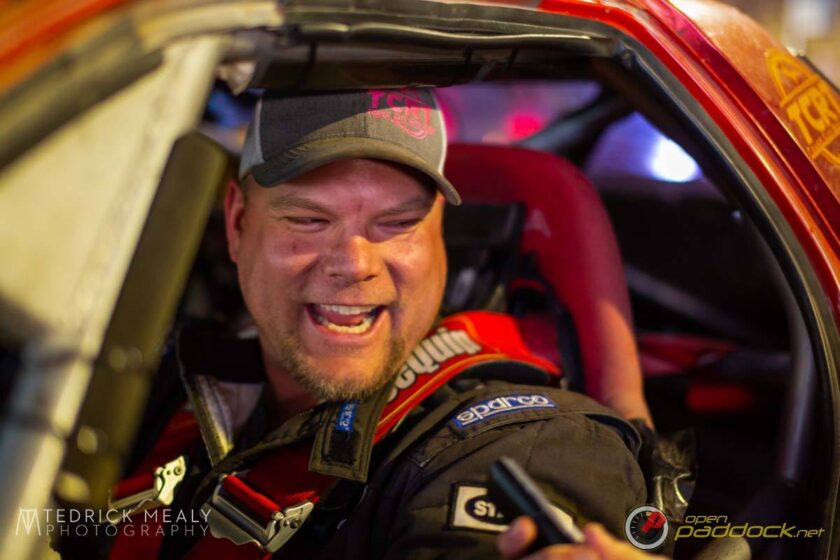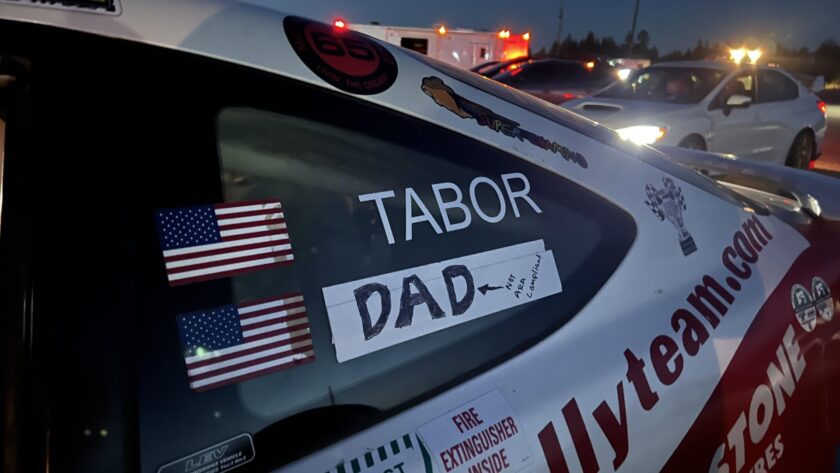Well, ok. The headline is a bit misleading if I’m honest.  The blocking rule in the 2012 rule book, which the teams now have, but media and fans do not as of yet, is unchanged from the 2011 rule book. The interpretation of this rule, however, looks like it will change dramatically.
The blocking rule in the 2012 rule book, which the teams now have, but media and fans do not as of yet, is unchanged from the 2011 rule book. The interpretation of this rule, however, looks like it will change dramatically.
9.3.Additional Provisions and Guidelines
B.Blocking – A Driver must not alter his/her racing line
based on the actions of pursuing Drivers or use an
abnormal racing line to inhibit or prevent passing.
Blocking will result in a minimum of a black flag “drive
through” penalty.
Ok, so the hope we all had that the horrendous issue of what constitutes blocking, and the artificial racing Barnhart’s interpretation caused was all in the past with the hiring of the new President of Competition and Race Director, Beaux Barfield. Then, yesterday, an article appeared on IndyCar.com regarding the new 2012 rule book and this issue of blocking. That’s where we found out that the actual wording of the rule will not change.

“A basis for the strong stance on blocking was that our cars have become sort of notorious for being difficult to pass so a little bit of defensive maneuvering leads to processional-type races,” he said. “I’ve revisited that type of no-passing racing. My opinion is that it is dealt with better technologically — either with power to pass or aerodynamics or whatever the case is — not in how a driver intuitively tends to drive or behave on the track.
“That doesn’t mean I’m allowing this to be wide open with dangerous weaving. I’ll deal with dangerous moves, but the defensive-type moves that people I think are more accustomed to are basically being restored to our kind of racing.” — Beaux Barfield, President of Competition and Race Director (from Philosophical shift on blocking, IndyCar.com)
While I’m still not convinced that devices such as “power-to-pass” as we’ve seen in the Champ Car World Series and in the IZOD IndyCar Series, and KERS and DRS in Formula 1, aren’t gimmicky and a departure from the pure sport of racing, I am heartened by Barfield’s comments and his philosophy toward what constitutes blocking. As Race Director for the American Le Mans Series, he did a great job of allowing hard racing to take place, but would bring the hurt for any genuine attempts at blocking. No imaginary line was necessary to have great racing in that series with passes for position not being an endangered species as it has become in the IZOD IndyCar Series.
I had argued previously in my article Does INDYCAR’s “Faux-vertaking” Rule Encourage Avoidable Contact? that the unintended consequence of the previous interpretation of this rule was an increase in the amount of contact occurring. Apparently, I’m not the only one with this view. Later in the IndyCar.com article, Barfield reviewed the infamous incident between Will Power and Dario Franchitti after which Will called out Dario saying, “I always race him clean, and he races me dirty.”
“Based on the stance on blocking at Toronto, it’s my opinion that there should have been a stronger stance on contact as well. The incident all by itself, forget the blocking rule, I would have had difficulty penalizing Dario for contact because to me it was incidental. He was rightfully there, he didn’t lock up the brakes, he got to the apex and Will continued to come all the way for the apex. Dario was there and had nowhere to go and therefore the contact is incidental. Based on leaving him as a sitting duck, if I don’t allow you to defend your position, I don’t allow you to protect yourself as it amounts to, it’s my radical opinion that the over-officiousness led to a lot of the issues that occurred in Turn 3 at Toronto.” — Beaux Barfield
As we move forward into the new 2012 season with new cars, new engines, and a ton of new entries (looking like high 20s to 30 cars) the interpretation of the blocking rule, and of the avoidable contact rule will be more important than ever. I’m feeling pretty confident that with the new sheriff in town, we will see a return to genuine racing with drivers being able to defend themselves while still coming down hard on those who like to weave. (Helio, I’m looking at you!) There are certainly some challenges facing the league, not least of which is race attendance and TV ratings, but there are some really positive things happening that can move IndyCar racing forward. Beaux Barfield’s philosophy toward avoidable contact and interpretation of the blocking rule are chief among them. Hopefully, this year Race Control won’t been the thing everyone is talking about on Monday morning. Wouldn’t it be a refreshing change?
So what’s your take? Is this a good move forward, or are we headed to parade-like events again? Let us know in the comments section below, and join the discussion with our friends at the IndyCar Garage.





I like most everything Beaux had to say there. Good hire, IndyCar.
Want him back in ALMS 🙁